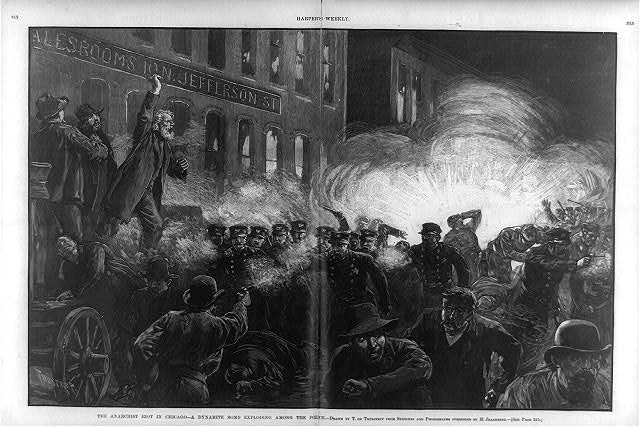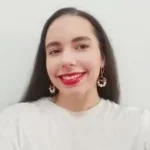May Day 2025: Trump’s Job Cuts Pours Salt on Workers’ Wounds
The U.S. is failing its workers. From almost non-existent paid family leave to lack of healthcare access, to what is now a new wave of unemployment at the hands of President Trump and Elon Musk.

May 1 is referred to as May Day, International Workers’ Day, or simply Worker’s Day. It’s a day for working-class people to celebrate their achievements and reflect on the progress made for everyday workers. However, it’s also a reminder of how much further U.S. workers still have to go regarding workers’ rights and overall quality of life—an issue brought into sharp focus by the unprecedented federal government layoffs in 2025.
These sweeping cuts, part of a broader effort by the Trump administration to shrink the federal government, have not only destabilized thousands of families, but also highlighted ongoing challenges related to job security, wage equity, and workers’ rights in the U.S.
Fair and Equal Wages Remain Stagnant
According to a 2023 TriNet report compiling data from 16 global sources (covering benefits like paid leave, healthcare, and unemployment insurance), the U.S. ranked 30th out of 30 developed countries analyzed, placing it dead last in overall worker benefits, and confirming that the wage gap is still a major issue, especially for women.
Latina women working full-time in the U.S. find that the wage gap is even larger for them. According to data from the National Women’s Law Center (NWLC) in 2023, Latinas working full-time, year-round were paid 58 cents for every dollar paid to white, non-Hispanic men. Including part-time and part-year workers, the figure drops to 51 cents. Of course, the Latina wage gap varies greatly by state. In California, Latinas earn 45 cents for every dollar white, non-Hispanic men earn (full-time, year-round), and 41 cents when including all workers.
Working hard but earning half has been a reality for many Latinas in the U.S., and having a college degree isn’t a shield from that. The NWLC also reported in 2024 that, compared to white men, Latinas may lose nearly 1.3 million over a 40-year career because of the wage gap.
In a country where labor exploitation is high, and worker satisfaction is low, this day serves as a reminder for everyone, especially Latinas, to continue to advocate for better wages and better working conditions.
The Impact of the 2025 Federal Government Layoffs
In early 2025, the federal government initiated mass layoffs, an effort led by Elon Musk and the Department of Government Efficiency (DOGE). The layoffs cut over 12% of the workforce across departments, including the Department of Defense, the Department of Veterans Affairs, the Department of Education, the Department of Health and Human Services, the Department of Energy, and others, with additional reductions among contractors and grant-funded positions. As of April 2025, The New York Times reported that at least 55,000 layoffs have been confirmed, 76,000 employees have accepted buyouts, and another 145,000 cuts are planned. These cuts are estimated to cost taxpayers $135 billion.
In addition to direct federal employees, the impact also extends to contractors and positions funded by grants. Estimates suggest the total number of job losses, when including these groups, could reach as high as 1.2 million. These layoffs have disproportionately affected women of color, veterans, and disabled workers, groups that are more likely to be employed by the federal government than in the private sector.
The elimination of Diversity Equity and Inclusion (DEI) offices and the rollback of wage transparency and anti-discrimination enforcement further threaten to widen the wage gap, particularly for Latinas and Black women, who already face significant pay disparities. Federal jobs have traditionally provided clearer pay structures and more equitable wages, serving as a model for the private sector. The loss of these positions not only increases unemployment in affected regions but also erodes hard-won gains in pay equity and workplace protections, making the fight for fair wages and working conditions even more urgent for all U.S. workers.
The Origins of International Workers’ Day
International Workers’ Day, or May Day in other countries, is rooted in the labor movement of the late 19th century, which gained momentum after the Haymarket Affair. This happened in Chicago in 1886, when workers went on strike on May 1 to demand an 8-hour workday. They rallied peacefully but were met with police brutality. On May 4, during a rally at Haymarket Square, someone threw a bomb at police officers who were dispersing the crowd, leading to chaos and violence. Police officers and civilians were killed, and up to 40 people were injured.
The Haymarket Affair became a symbol of the struggle for workers’ rights. While it led to more government crackdowns on labor organizations, it also inspired solidarity among workers in the U.S. and around the world as they continued to push for labor reforms. In 1889, The Second International, a federation of socialist and labor groups, designated May 1st as International Workers’ Day to commemorate the Haymarket Affair and celebrate workers. Since then, May Day has been associated with the labor movement and the fight for workers’ rights, including demands for fair wages, safe working conditions, and the right to organize.

Photo credit: Library of Congress Public Domain
It’s worth noting that, during the Cold War, the holiday was embraced by communist countries like the Soviet Union. May Day became a major holiday not just in the Soviet Union, but in other Eastern Bloc countries. As a result, the holiday became associated with communism, and anti-communism then led to the suppression of May Day’s association with labor movements in the U.S.
This is why, even though May Day has roots in the American labor movement, the U.S. doesn’t officially celebrate May 1 as International Workers’ Day. Instead, the U.S. established Labor Day in 1894, which is observed every year on the first Monday of September, and Canada followed suit. Similar to May Day, Labor Day resulted from a violent clash between workers and police during the Pullman strike, which triggered a crisis. This prompted President Grover Cleveland to sign the holiday into law, presumably to maintain the support of the working class.
The day is now recognized worldwide with marches and demonstrations. The holiday serves as a poignant reminder of the progress achieved through relentless activism and solidarity. From the implementation of the eight-hour workday to the establishment of labor rights, workers’ movements have won significant victories for the working class. However, the stark reality is that there are still persistent issues to address.
The Ongoing Challenges for Latinas
One of those persistent issues is the gender wage gap and how it affects Latinas. There’s no denying that the fight for gender equality in the workplace has generated more interest in recent years, but the battle is ongoing. In 2025, the wage gap is still substantial. Women overall are still paid 17% less than men on average, earning $0.83 for every dollar men earn.
For Latinas, the challenges in the workplace are even more formidable because there are more harmful systemic barriers in place that affect them disproportionately. Statistics reveal a persistent truth: Latina women earn substantially less than men and white women. According to the Lean In Institute, Latinas make 46% less than white men and 26% less than white women.
May Day reminds U.S. workers to confront these injustices head-on and continue demanding fair pay and benefits that improve their quality of life. Addressing the wage gap requires legislative reforms and changes in workplace policies, as well as a cultural shift. Any meaningful change to policy in the U.S. occurred only when there was also enough public pressure to get politicians to move in that direction.
Fostering solidarity within the Latino community and standing together has proven key to amplifying the collective voice and taking transformative action. A U.S. economy where Latina women are compensated fairly for their work and treated with dignity and respect in the workplace can exist. Latinas are a powerful, talented community that’s fighting its way towards change.




